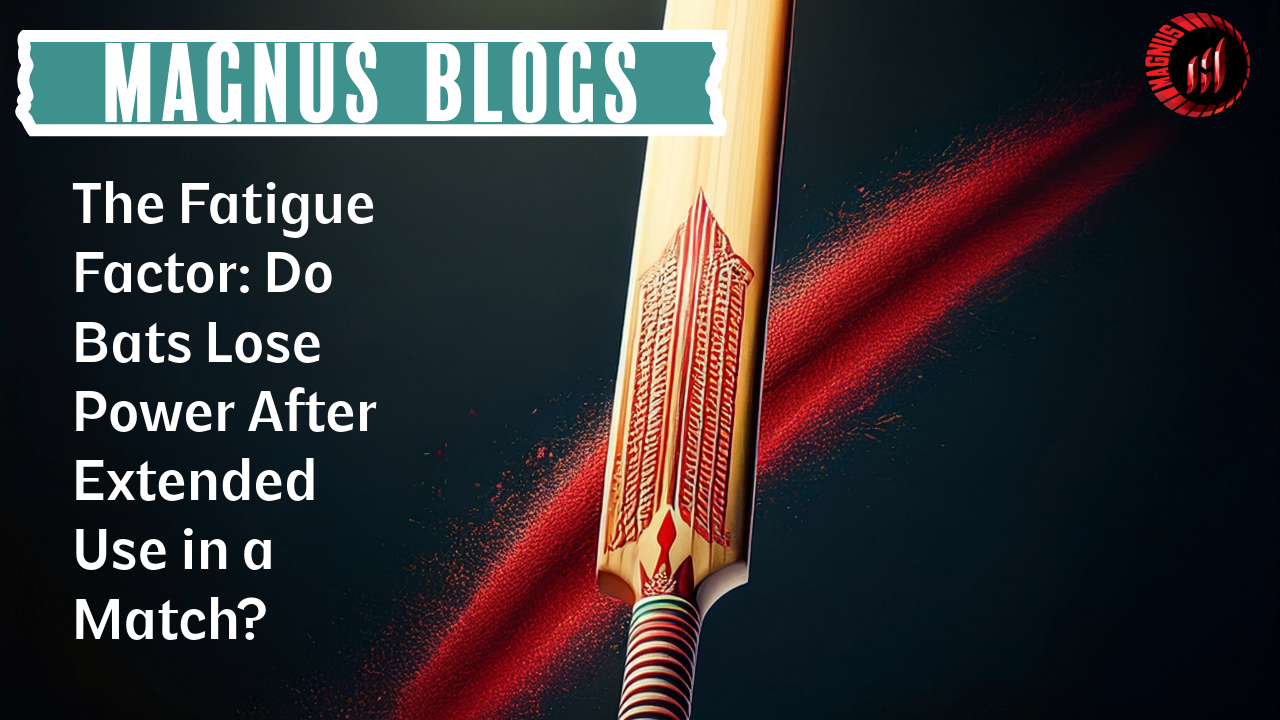Cricket bats, especially finely crafted English willow models, are often treated like prized possessions. Players oil them, knock them in, and store them carefully. But have you ever wondered — does a bat get tired during a match? Is there any truth to the idea that a bat’s performance dips after hours at the crease? Welcome to the concept of bat fatigue, a fascinating phenomenon that might just affect your innings more than you think.
What is Bat Fatigue?
Bat fatigue doesn’t mean the bat physically droops or shows obvious damage mid-match. Instead, it refers to the temporary decline in performance characteristics — like rebound, punch, or ping — due to repeated high-speed ball impacts over time. Think of it like a tennis racquet losing string tension or a drum losing resonance after heavy use.
Key Factors That Influence Mid-Match Bat Performance:
1. Willow Compression and “Softening”
Each time the ball hits the bat, especially around the sweet spot, the willow fibers compress slightly. Over the course of 100+ deliveries, these tiny shifts can change how responsive that area feels. The bat might lose a fraction of its spring, resulting in shots traveling a little less far, especially on mistimed hits.
2. Handle Tension and Shock Transfer
Long innings mean more energy travels up the handle with every shot. This sustained shock can gradually loosen the internal bond between handle and blade — not visibly, but enough to slightly dull the feel and reduce control during late innings.
3. Environmental Absorption (Heat and Humidity)
Bat fatigue can also be amplified by weather conditions. Under hot or humid conditions, moisture and heat can seep into the bat, slightly altering its weight balance and making it feel “heavier” by the hour.
4. Grip Slippage Over Time
The more a bat is used in one session, the more likely your grip becomes slippery with sweat. While this is technically a human factor, it affects how powerfully and cleanly you can transfer force to the ball — creating the impression of a bat losing power.
Is This Effect Permanent?
Interestingly, bat fatigue is often temporary. Just like muscles recover after rest, your bat can “recover” too. Once it’s cleaned, dried, and stored properly after a match, the wood fibers usually regain their tension and responsiveness. However, over months or years, cumulative stress does begin to create long-term wear and reduce overall punch.
Signs of Bat Fatigue Mid-Match:
-
Your previously crisp drives start falling short.
-
The bat feels unusually “dead” on contact.
-
You notice more vibration on mishits than earlier in the innings.
-
Shots that used to race through the infield now get picked up.
What Can You Do About It?
-
Carry Two Bats: If you’re playing a long-format game, consider switching bats around the 60-80 ball mark.
-
Use a Bat Conditioner: Wipe and re-oil between innings if needed.
-
Rotate Use in Practice: Don’t always practice with your match bat; save it for games to extend its fresh feel.
-
Rest and Dry Post-Match: Allow your bat to breathe and dry out fully after each game, especially if it’s humid.
Cricket bat types, Cricket equipment in usa, Cricket equipment store, Cricket gloves, Cricket helmet, Cricket kit bags, Cricket retailers, Durable cricket gloves, English willow bats, Icc approved helmets., Kashmir willow cricket bat, Latest kashmir willow bat
